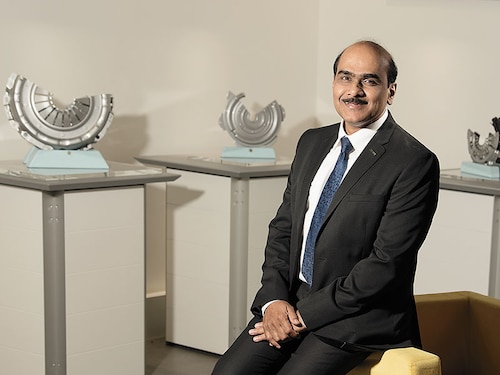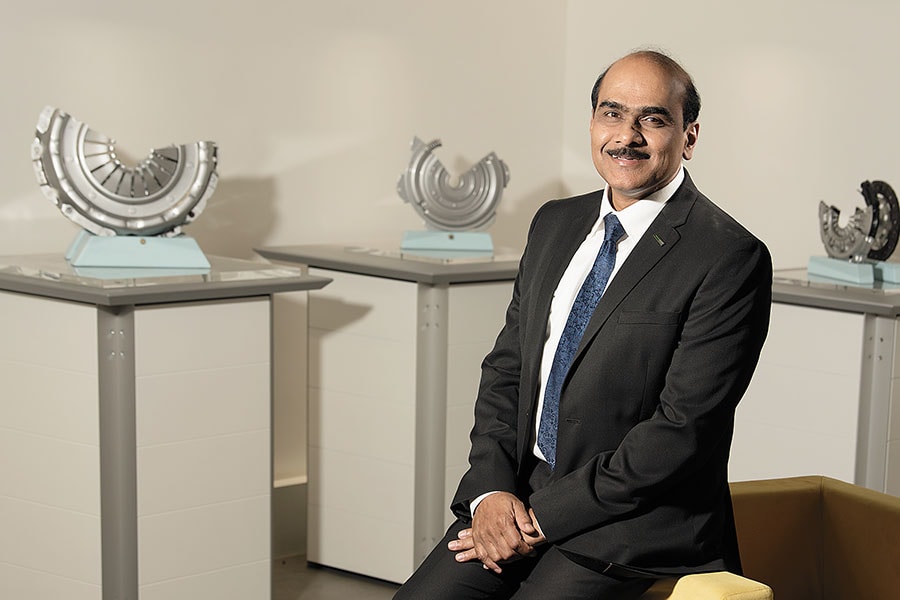India is a price-driven market: Schaeffler's Harsh Kadam
Schaeffler India's Harsh Kadam on the German component maker's plans for the changing automotive landscape


 Image: Jignesh Mistry for Forbes India
Image: Jignesh Mistry for Forbes India
India is in the midst of its worst auto sector growth in over two decades and the coronavirus pandemic has only aggravated the situation. But Harsh Kadam, managing director of Schaeffler India, a subsidiary of German family-owned automotive and industrial component maker, is looking for positives. Slowdown, he says, is the litmus test for any organisation. “It’s during these trying times that a differentiation is made by successful companies.” Schaeffler’s Pune-headquartered Indian arm gets 60 percent of its sales from the bearings business. “There is a solution to almost every problem. If there isn’t, we strive to find or invent one,” says Kadam in an interview with Forbes India. Edited excerpts:
Q. With the new emission norms coming into effect in April, how do you see the automotive landscape changing?
It is clear that for the next few decades, there will not be one clear technology, particularly in vehicle propulsion. We are preparing for whatever shape technology takes—hybrids, micro hybrids, pure electric vehicles or hydrogen or fuel cell propulsion systems. We have continuously made strategic investments and acquisitions which enable us to be a valuable business partner to our customers and supply partners. On the industrial front too, we are taking strides in the areas of reliability and performance improvement of our products as well as developing solutions in the area of Industry 4.0—digital industrial technology—leading to a connected industry and the world at large.
Q. Is the industry ready for the transition?
We have been in touch with vehicle manufacturers and the companies have been working endlessly on this front. Before April, they will be ready with the required technologies. Towards reducing the overall emissions, one of the major trends is to make engines smaller and more efficient. In the meantime, engines are becoming more powerful per unit of displacement, in order to not compromise on driving performance. This added technology will call for managing the increased cost. BS-VI will bring in new functionalities. The number of functions that will go into a component will be more, in addition to new raw material and processes. Through automation, the process cost may be optimised but not the material cost. In the end, consumers will decide what are they going to pay for and how much.
Q. The churn in the auto industry is unprecedented. New emission norms, costlier automobiles, falling demand and a push towards more electric vehicles…
Looking at the gradually rising trend of electric mobility in India, I feel the technology would initially exhibit itself in the two-wheeler market, followed by three-wheelers and the passenger bus segment. The two- and three-wheeler segments are considered high-volume segments and that may help Schaeffler India become a key contributor in the company’s global electric mobility structure. In fact, Schaeffler India has come up with its patented two-speed transmission system for electric two- and three wheelers. Schaeffler in Europe has developed bio-hybrids keeping sustainable mobility for intra-city mobility and I see big prospects for such offerings in India too.
The automotive industry is going through a transition. Consumer preferences are changing, regulations are changing, conventional players are getting challenged with the advent of new technology and players. If we look at this perspective, it is far from gloomy. Having said that, the market has to improve and volumes need to come back.
Q. How do you see your India business shaping up?
For Schaeffler, innovation and agility towards the business have kept the ball rolling, even during unfavourable conditions. In 2019, Schaeffler showcased agility in managing costs, reprioritising projects and responding to changing customer needs. In India, the economic fundamentals are strong, as our growth is driven by internal consumption-led demand. India is a price-sensitive market and driven a lot by sentiment. Customers truly value low-cost innovation. The key is to master the art of developing and supplying good quality products at competitive prices in a volatile and dynamic market. When it comes to developing new technology in the automotive market, India has been more of an adapter.
Q. Where does India figure in the company’s global scheme of things?
In terms of revenue share, there is still a long way to go, but Schaeffler Group recognises the potential and strategic importance of India as a market. Therefore, we are continuing to invest in capacities and capabilities in a consistent manner. Till 2016, we were investing about &euro20 million per annum in India, but since 2017-18, we have almost doubled that.
With four manufacturing facilities and a strong distribution business, Schaeffler has a strong presence in India. The India business—which was earlier part of Schaeffler Europe Region—was made a part of Asia-Pacific region (China excluded) in January.
Q. Do you have a slowdown strategy?
Our strategy is clear: Value creation for all stakeholders and growing profitably. Our ‘content per vehicle’ value has increased and this is contributing to our growth story. We continue to build and leverage our strong presence in the engine and transmission applications with better and new value products.
Despite economic headwinds last year, our balanced business portfolio between industrial (53 percent) and automotive (47 percent) ensured we ended the year on a decent note. Our aggressive localisation drive in the last two years helped us become more competitive which helped us gain market share in some high growth sectors and applications. The external markets remain volatile, but we are optimistic that 2020 will allow us to chart a better course as we prepare for the future.
First Published: Apr 02, 2020, 11:30
Subscribe Now